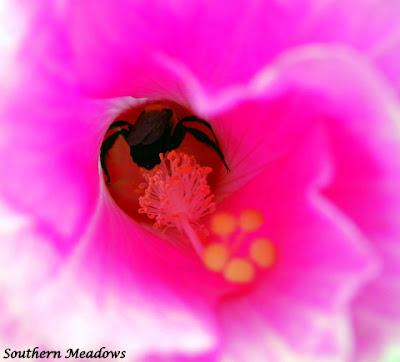It is All About the Pollinators (photo tribute)
80% of all plants rely upon pollination for survival!
Bumblebee in hibiscus bloom
What is a pollinator?
A pollinator is an animal that causes a plant to make fruit or seed by moving pollen from one part of the flower to another.
Bee on Hosta bloom
Bees,
Bee on Thyme
Bee on Zinnia
hummingbirds,
Ruby-throated Hummingbird
and butterflies make the best pollinators.
Morning Cloak Butterfly
But other insects such as beetles, wasps, spiders and flies can also be pollinators.
beetle on Magnolia bloom
There are nocturnal pollinators as well such as moths and bats.
Cercropia Moth
And insects, lizards, beetles and ants accomplish pollination inadvertently.
One out of every three bites of food that we take is made possible by pollination!
Help conserve and support pollinators...plant a pollinator friendly garden, don't use pesticides, incorporate native plants in your landscape and leave your garden a little untidy!
Help conserve and support pollinators...plant a pollinator friendly garden, don't use pesticides, incorporate native plants in your landscape and leave your garden a little untidy!















.png)
